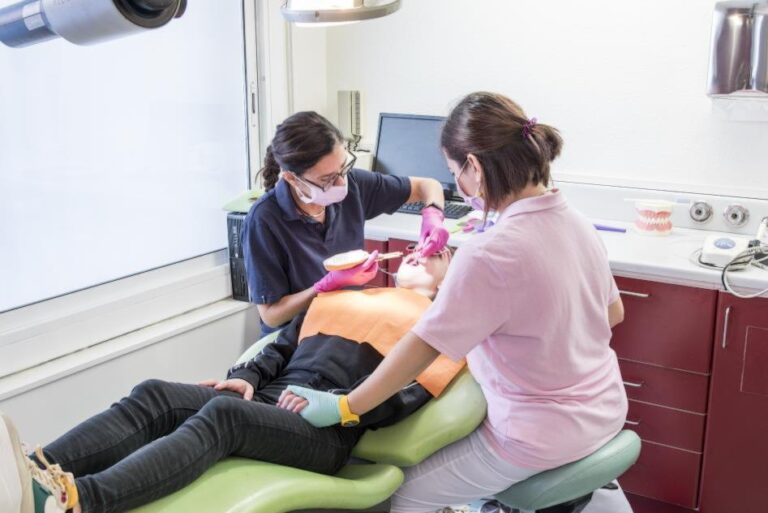Clínica Boj » Caries treatment » Toothache

Children and teenagers'toothaches
A principal goal of health care professionals, as is the case of the paediatric dentists is to prevent or treat pain in their patients.
Sometimes, in young children, dental pain is underestimated by families, who believe that the tooth that causes discomfort is a temporary tooth, despite the fact that, from the age of 6 or 7, child patients already have permanent teeth and these can cause a “toothache”. On the other hand, some adolescents hide or camouflage their pain from their families for fear of going to the dentist, causing discomfort to increase over time. For this reason, it is essential that from the moment the child, adolescent or young person begins to feel any toothache, they should go to a paediatric dental clinic to discover the cause of the problem.
What causes a toothache?
The colloquially called “toothache”, or pain localized by a patient in a molar or a particular tooth, can be associated with various causes. Most often, the origin of this pain is associated with a deep carious lesion with pulp (nerve) involvement that may or may not have a superimposed infection. In other situations, interproximal cavities (between teeth) that already have formed a cavity in the surfaces between the teeth can lead to accumulation of food, which will lead to a pressure on the gums and thus a frequent pain after food intake. Other causes include failure of previous treatments, fractured or lost restorations and periodontal injuries.


Treatments to heal toothaches
The treatment of an emergency will be based on the correct diagnosis of the origin of pain, which the paediatric dentist will carry out from the clinical history, x-rays and complementary examinations. Sometimes, a temporary treatment can be carried out, with the aim of suppressing tooth sensitivity and later planning an appointment to finish the treatment. If there is an active infection, it will be a priority to control it and relieve pain by creating a drain (if possible) and prescribing antibiotics and anti-inflammatories. In any case, it will be the task of the paediatric dentist to identify the reason for the patient’s pain and propose the most appropriate treatment to alleviate it.


